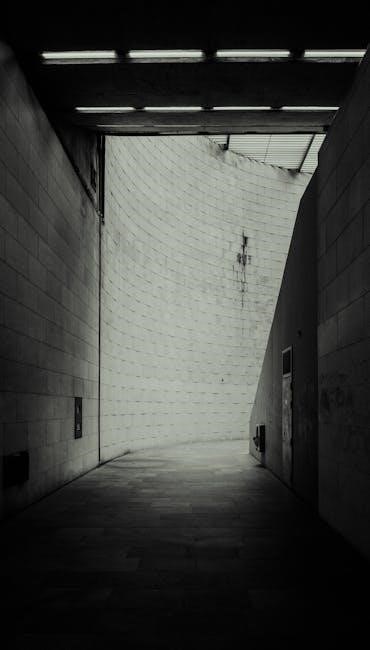The Martian Metropolis PDF is an educational resource exploring challenges of Mars colonization. It aids students in analyzing societal and environmental obstacles through structured learning activities.

Overview of the PDF and Its Author
The Martian Metropolis PDF is a comprehensive resource authored by Meg Thacher, focusing on the challenges of Mars colonization. Published by Cricket Media in 2021, it combines scientific insights with engaging narratives to explore life on Mars. The PDF is structured to aid students in understanding key concepts, such as cosmic radiation risks and societal obstacles, through activities like KWL charts. Thacher’s work bridges fiction and fact, offering a unique perspective on Martian urban planning and its implications. Designed for educational purposes, the document is widely used in classrooms to foster critical thinking about space exploration and its future. Its clear format and accessible language make it a valuable tool for both students and educators exploring the Red Planet’s potential metropolises.
Significance of the Title “Martian Metropolis”
The title Martian Metropolis signifies a vision of a future city on Mars, blending urban planning with interplanetary colonization. It captures the essence of transforming Mars into a habitable hub, emphasizing humanity’s ambition to expand beyond Earth. The term “Metropolis” evokes images of a bustling, self-sustaining city, highlighting technological and societal advancements needed for Martian life. By focusing on urban development, the title underscores the importance of infrastructure and community in overcoming colonization challenges. It also reflects the PDF’s central theme of exploring both the possibilities and obstacles of establishing a human settlement on Mars, making it a compelling and thought-provoking name for the resource.
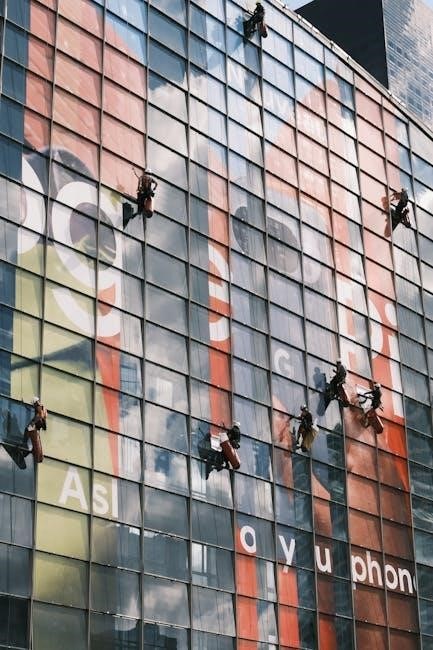
Central Themes and Concepts
The Martian Metropolis PDF delves into urban planning, cosmic radiation risks, and colonization challenges, offering insights into building a sustainable Martian city and overcoming environmental obstacles.

The Concept of a Martian City
The Martian Metropolis PDF introduces the idea of a Martian city as a hub for future human habitation. It explores the challenges of urban planning on Mars, including the need for protective structures to shield inhabitants from cosmic radiation and harsh environmental conditions. The concept emphasizes sustainable design, utilizing Martian resources to create self-sufficient settlements. The city is envisioned as a place where technology and innovation converge to support life, addressing issues like atmosphere creation and energy production. Through detailed analysis, the PDF highlights how a Martian metropolis could serve as a blueprint for long-term colonization, blending practicality with futuristic vision.
Cosmic Radiation and Its Impact on Settlers
Cosmic radiation poses a significant threat to settlers on Mars, as highlighted in the Martian Metropolis PDF. Unlike Earth, Mars lacks a robust magnetic field and atmosphere to block harmful radiation, exposing inhabitants to dangerous levels of solar and cosmic rays. This radiation can cause severe health issues, including increased cancer risk, DNA damage, and neurological effects. The PDF emphasizes the need for protective measures, such as underground habitats or inflatable radiation-proof shelters, to safeguard settlers. Understanding and mitigating these risks is crucial for ensuring the survival and well-being of future Martian residents. Addressing this challenge is essential for making human colonization of Mars a viable and sustainable reality.
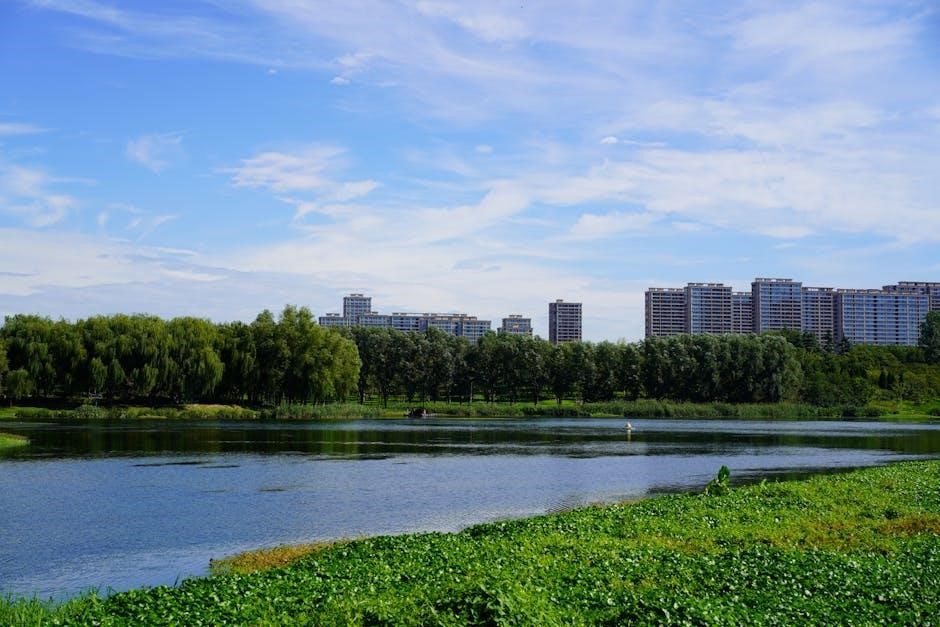
Colonization Challenges and Solutions
Colonizing Mars presents numerous challenges, as detailed in the Martian Metropolis PDF. Key issues include cosmic radiation exposure, harsh geological conditions, and psychological stress. Settlers must contend with limited resources, extreme temperatures, and isolation. To address these challenges, innovative solutions are proposed, such as underground habitats, terraforming, and advanced life support systems. The PDF highlights the importance of sustainable infrastructure and mental health strategies to ensure the well-being of settlers. By exploring these challenges and solutions, the resource provides a comprehensive framework for overcoming obstacles and establishing a thriving Martian society. These insights are essential for understanding the complexities of Mars colonization and preparing for future missions.
Challenges of Martian Colonization
The Martian Metropolis PDF by Meg Thacher outlines significant challenges, including isolation, technological limitations, and the need for sustainable solutions for Martian settlers to thrive.
Cosmic Radiation Exposure
Cosmic radiation exposure is a critical challenge for Martian settlers, as Mars lacks Earth’s protective magnetic field and atmosphere. Prolonged exposure to cosmic rays and solar flares increases cancer risks and DNA damage. The Martian Metropolis PDF highlights how settlers must adapt by using protective habitats and suits. Researchers propose solutions like underground living and electromagnetic shielding to mitigate these risks, ensuring safer colonization efforts.
Geological and Atmospheric Obstacles
Mars’ geological and atmospheric conditions pose significant challenges for colonization. The planet’s thin atmosphere offers little insulation or protection, leading to extreme temperature fluctuations. Dust storms, which can last for months, damage equipment and infrastructure. Additionally, the Martian regolith contains perchlorates, which are toxic to humans. The Martian Metropolis PDF discusses these obstacles in detail, emphasizing the need for advanced engineering solutions such as pressurized habitats and atmospheric processing systems to create a habitable environment. Addressing these challenges is essential for the survival and sustainability of future Martian settlements.
Psychological and Sociological Factors
Colonizing Mars introduces profound psychological and sociological challenges. Prolonged isolation, confinement, and the stress of living in a hostile environment can affect settlers’ mental health. The Martian Metropolis PDF highlights these issues, emphasizing the need for strong community structures and governance systems. Sociological dynamics, such as group cohesion and leadership, play a critical role in maintaining order and cooperation within a Martian city. Additionally, the psychological impact of leaving Earth and adapting to a new society must be addressed. The PDF explores potential solutions, including virtual reality therapies and AI-driven support systems, to mitigate these challenges and ensure the well-being of settlers. These factors are crucial for the long-term success of Martian colonization.

Future of Martian Cities
The future of Martian cities involves innovative urban designs, sustainable infrastructure, and cultural adaptation, as outlined in the Martian Metropolis PDF for a thriving society.
Proposed City Concepts and Designs
The Martian Metropolis PDF presents visionary city designs tailored for Mars’ harsh environment; Concepts like “Aleph,” the first proposed Martian metropolis, emphasize sustainability and innovation. Architects suggest using local materials, such as Martian regolith, to construct habitats. Inflatable domes and underground cities are highlighted as practical solutions to protect settlers from cosmic radiation and extreme temperatures. Urban planners propose modular designs that can expand as populations grow. These designs integrate renewable energy sources, like solar power, to ensure self-sufficiency. The PDF also explores futuristic ideas, such as 3D-printed buildings and vertical farming, to address resource limitations. These concepts aim to create habitable, efficient, and inspiring cities on Mars, paving the way for humanity’s next frontier. By blending technology and creativity, these designs offer a glimpse into the future of Martian urbanization.
The Role of Urban Planners in Mars Colonization
Urban planners play a pivotal role in shaping Mars colonization by designing sustainable cities. The Martian Metropolis PDF highlights their importance in creating habitats that adapt to Mars’ unique challenges. Planners must consider radiation shielding, atmospheric conditions, and resource accessibility. They develop strategies for land use, transportation, and infrastructure, ensuring efficient and resilient city layouts. Collaborating with engineers and scientists, urban planners integrate innovative technologies, such as inflatable modules and 3D-printed structures. Their work balances functionality with quality of life, addressing psychological and sociological needs of settlers. By envisioning future cities like “Aleph,” planners pave the way for a thriving Martian society. Their expertise is essential for turning theoretical concepts into practical, livable spaces, making Mars colonization a tangible reality.
Economic and Cultural Aspects of Martian Cities
The Martian Metropolis PDF delves into the economic and cultural dimensions of establishing cities on Mars. Economic challenges include high costs of transportation, construction, and resource extraction. Self-sufficiency is crucial, with potential revenue from mining and interplanetary trade. Culturally, Martian cities may develop unique identities shaped by isolation and diversity among settlers. Community-building efforts, such as shared cultural activities, will be vital for maintaining morale; The interplay between economic viability and cultural vibrancy is central to creating sustainable Martian societies, ensuring that cities like “Aleph” thrive both economically and socially. This balance is essential for fostering a sense of belonging and purpose among the first Martians, making the Red Planet a home, not just a colony.
Scientific Research on Mars
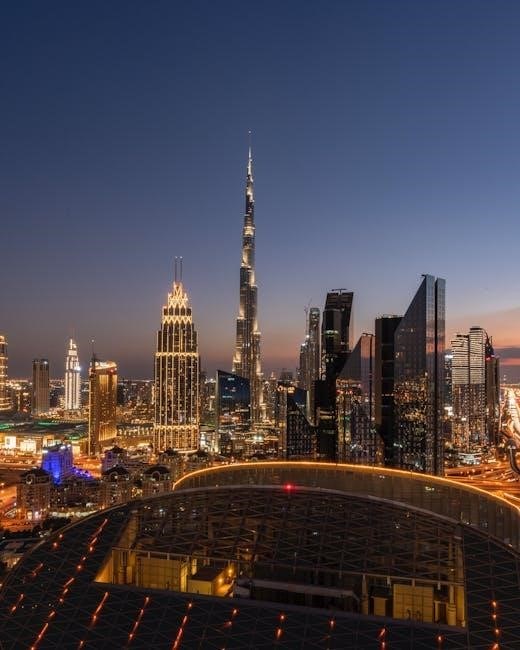
Scientific research on Mars focuses on understanding the planet’s geology, atmosphere, and potential for biological life to support future colonization efforts and make it habitable.

Key Terms and Terminology
Understanding key terms is crucial for analyzing Martian Metropolis. Essential vocabulary includes colonization, cosmic radiation, and geological studies. These terms highlight the challenges and scientific aspects of Mars exploration. Atmospheric analysis and biological assessments are also critical, as they determine the planet’s habitability. The text introduces urban planning concepts for Martian cities, emphasizing the role of architecture in overcoming environmental obstacles. Additionally, terms like space exploration risks and SETTLER adaptation are central to discussions about human survival on Mars. These terms collectively provide a foundation for understanding the complexities of establishing a human settlement on the Red Planet, as explored in Martian Metropolis.
Geological and Atmospheric Studies
Martian Metropolis delves into geological and atmospheric studies crucial for understanding Mars’ habitability. The planet’s soil composition, known as regolith, poses challenges for construction due to its abrasive nature. Atmospheric conditions, including thin air and frequent dust storms, require innovative solutions for shielding habitats. Geological studies reveal Mars’ volcanic history and potential water sources, essential for colonization. Atmospheric analysis focuses on low oxygen levels and temperature fluctuations, impacting life support systems. These studies are vital for designing infrastructure that can withstand Martian environments, ensuring settlers’ safety and sustainability. By addressing these geological and atmospheric challenges, Martian Metropolis provides a roadmap for overcoming obstacles in Mars colonization efforts, emphasizing the importance of scientific research in urban planning and habitat design.
Biological Assessments and Discoveries
Martian Metropolis highlights the biological challenges faced by potential settlers, such as cosmic radiation exposure and its impact on health. The PDF explores how prolonged radiation can lead to cancer and DNA damage, emphasizing the need for protective shielding in habitats. Biological assessments also focus on the search for past or present life on Mars, including the study of biosignatures in soil and water samples. These discoveries are crucial for understanding the planet’s habitability and designing life support systems. The resource underscores the importance of biological research in ensuring the survival and well-being of future Martian inhabitants, while also addressing ethical questions about introducing Earth-based life forms to the planet. This section provides a foundation for understanding the biological complexities of Mars colonization.
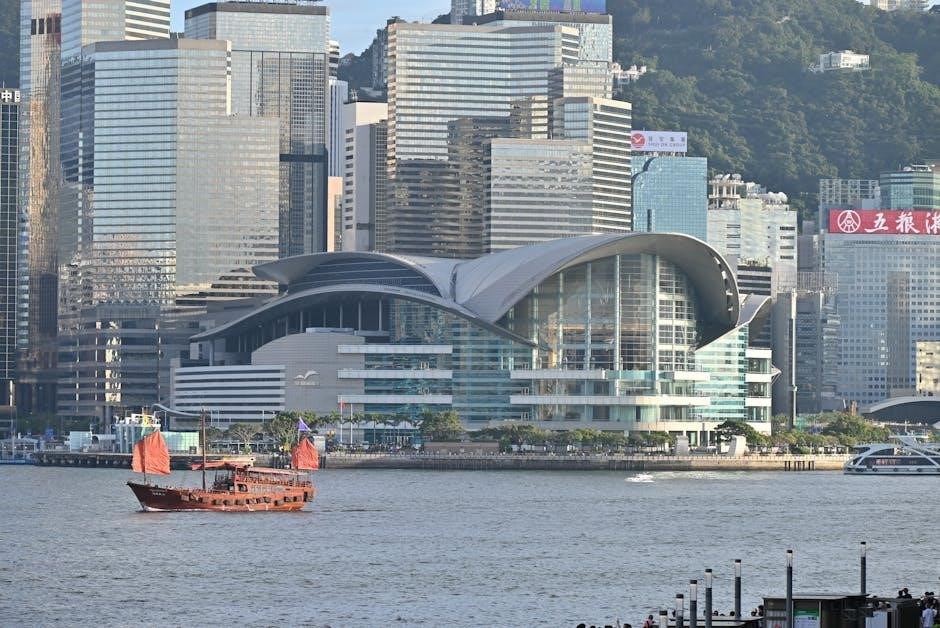
Education and Resources
The Martian Metropolis PDF provides educational tools like lesson plans and study guides to engage students in Mars colonization challenges and solutions through interactive learning activities.
Lesson Plans and Study Guides
The Martian Metropolis PDF offers comprehensive lesson plans and study guides to engage students in exploring Mars colonization challenges. These resources include KWL charts and analysis frameworks to help students organize their thoughts and evaluate the text’s themes, such as cosmic radiation risks and geological obstacles. The guides also incorporate interactive activities to deepen understanding of Martian society-building. Designed for various learning styles, the materials encourage critical thinking and collaboration. They cover key concepts like radiation exposure, atmospheric challenges, and psychological factors, enabling students to grasp the complexities of establishing a Martian city. These educational tools are tailored to prepare learners for advanced discussions on space exploration and its societal implications.
Student Activities and Interactive Learning
The Martian Metropolis PDF incorporates engaging student activities and interactive learning tools to deepen understanding of Mars colonization. These include KWL charts for organizing ideas and analysis frameworks for evaluating challenges like cosmic radiation and geological obstacles. Interactive assignments encourage students to imagine building a Martian society, fostering creativity and problem-solving skills. Virtual simulations and multimedia projects allow learners to explore Martian environments and urban planning concepts. Group discussions and debates on topics like radiation risks and psychological factors promote collaboration and critical thinking. These activities cater to diverse learning styles, making the exploration of Martian colonization both immersive and educational. They help students connect theoretical concepts with practical applications, preparing them for advanced discussions on space exploration and its societal implications.
Online Resources and Study Tools
The Martian Metropolis PDF is supported by a variety of online resources and study tools to enhance learning. These include interactive lesson plans, digital flashcards, and multimedia content that supplement the text. Platforms like Quizlet offer flashcards with key terms such as “atmosphere,” “radiation,” and “colonize,” helping students memorize essential concepts. Additionally, websites like Studocu provide lecture notes and summaries to aid in exam preparation. Interactive simulations and virtual tours of proposed Martian cities are also available, allowing students to visualize urban planning and environmental challenges. These resources cater to diverse learning preferences, making the study of Martian colonization engaging and accessible. They complement the PDF by offering practical tools for deeper exploration of the topic.
The Martian Metropolis PDF underscores the importance of addressing cosmic radiation and colonization challenges. It highlights the need for continuous research and innovation in space exploration, inspiring future discoveries and urban planning on Mars. The resource serves as a foundational tool for understanding the complexities of establishing a Martian society, emphasizing the balance between technological advancement and environmental adaptation. Its insights into radiation effects and societal obstacles make it a valuable reference for both students and researchers. By fostering curiosity, it encourages further exploration of Mars’ potential as humanity’s next frontier. The PDF remains a critical resource in the ongoing quest to make Martian colonization a reality.
Importance of Martian Metropolis in Space Exploration
The Martian Metropolis PDF plays a pivotal role in space exploration by addressing critical challenges like cosmic radiation and colonization obstacles. It serves as an educational tool, helping students and researchers understand the complexities of establishing a human settlement on Mars. By highlighting key concepts such as radiation exposure and urban planning, the PDF provides a comprehensive framework for analyzing the feasibility of Martian cities. Its focus on both scientific and societal challenges makes it a valuable resource for inspiring future innovations in space exploration. The document also bridges the gap between science fiction and reality, offering practical insights into the potential of Mars as humanity’s next frontier. Its significance lies in its ability to educate and motivate the next generation of space explorers and urban planners.
Future Prospects and Continuous Research
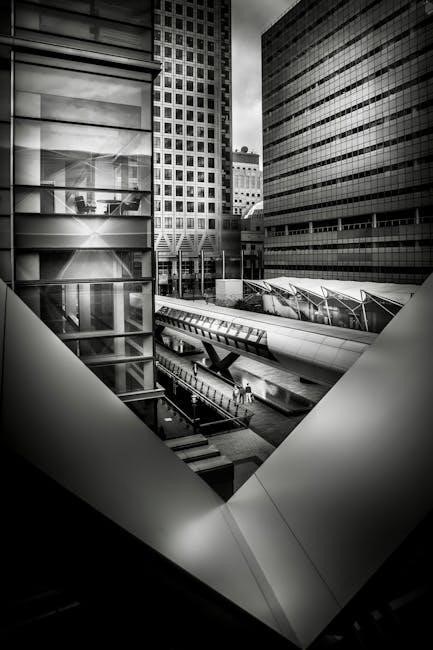
Continuous research is essential for advancing Martian colonization. The Martian Metropolis PDF emphasizes the need for ongoing studies in areas like radiation shielding and urban design. By exploring innovative solutions, scientists and engineers can address the obstacles highlighted in the document. Future research will likely focus on sustainable living conditions and the psychological well-being of settlers. Collaboration between experts from various fields is crucial to turning the vision of a Martian metropolis into reality. The PDF serves as a foundation for further exploration, encouraging interdisciplinary efforts to overcome challenges. As new technologies emerge, the prospects for establishing a thriving Martian city become increasingly achievable, making the PDF a valuable resource for guiding future endeavors. Its insights pave the way for groundbreaking discoveries and advancements in space exploration.
Final Thoughts on Martian Colonization
The Martian Metropolis PDF underscores the complexity and importance of colonizing Mars. It highlights the need to address cosmic radiation, psychological challenges, and urban planning. While the journey is fraught with obstacles, the potential for growth and innovation is immense. Continuous research and collaboration are vital to overcoming these hurdles. The PDF emphasizes the balance between technological advancement and human resilience. By exploring these themes, it provides a roadmap for future endeavors, inspiring hope for a sustainable Martian society. The document serves as a reminder that colonization is not just a scientific endeavor but a cultural and economic one, shaping humanity’s future in space. Its insights offer a compelling vision for Mars as a new frontier, urging us to embrace the challenges and opportunities it presents.
